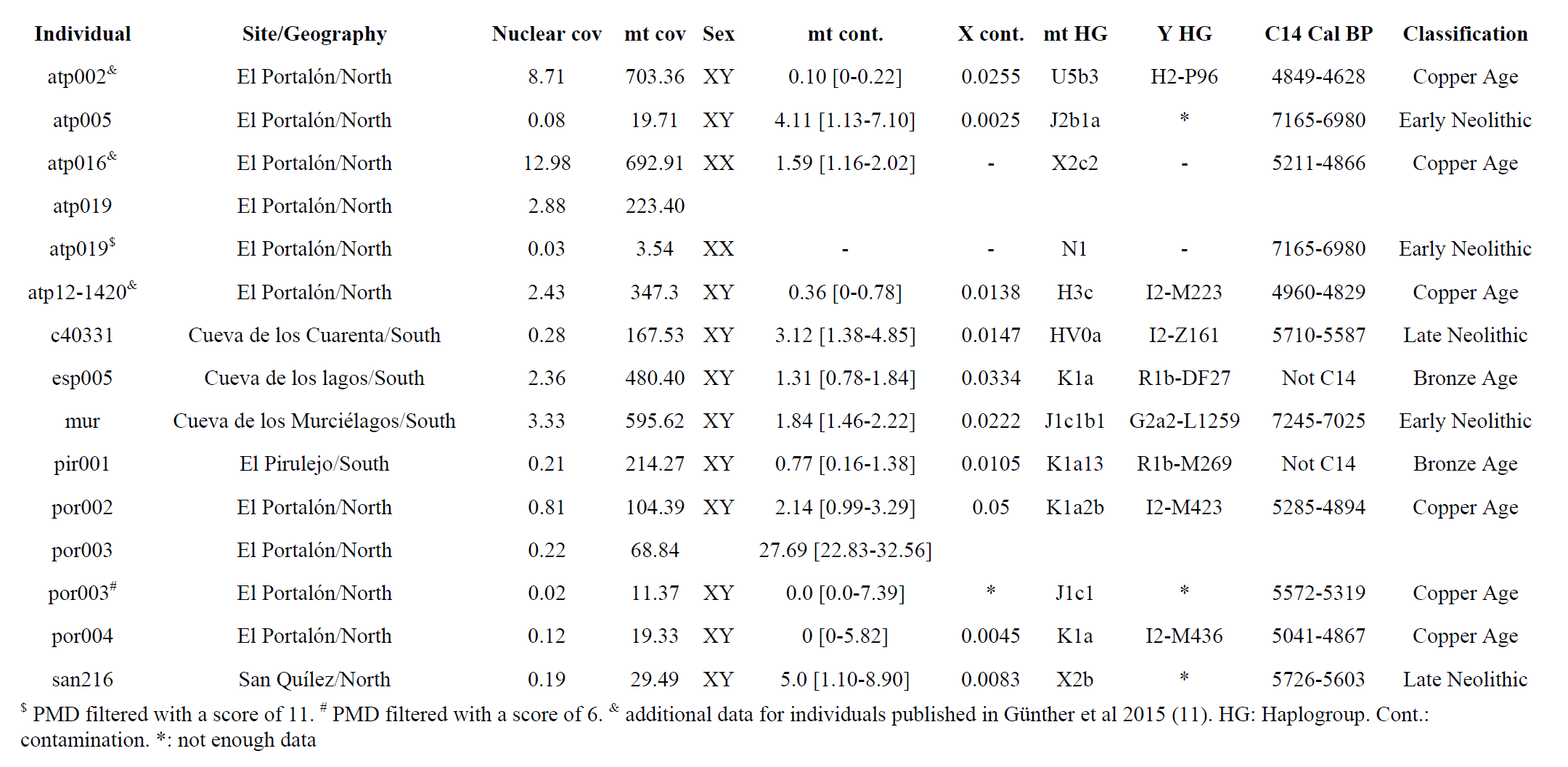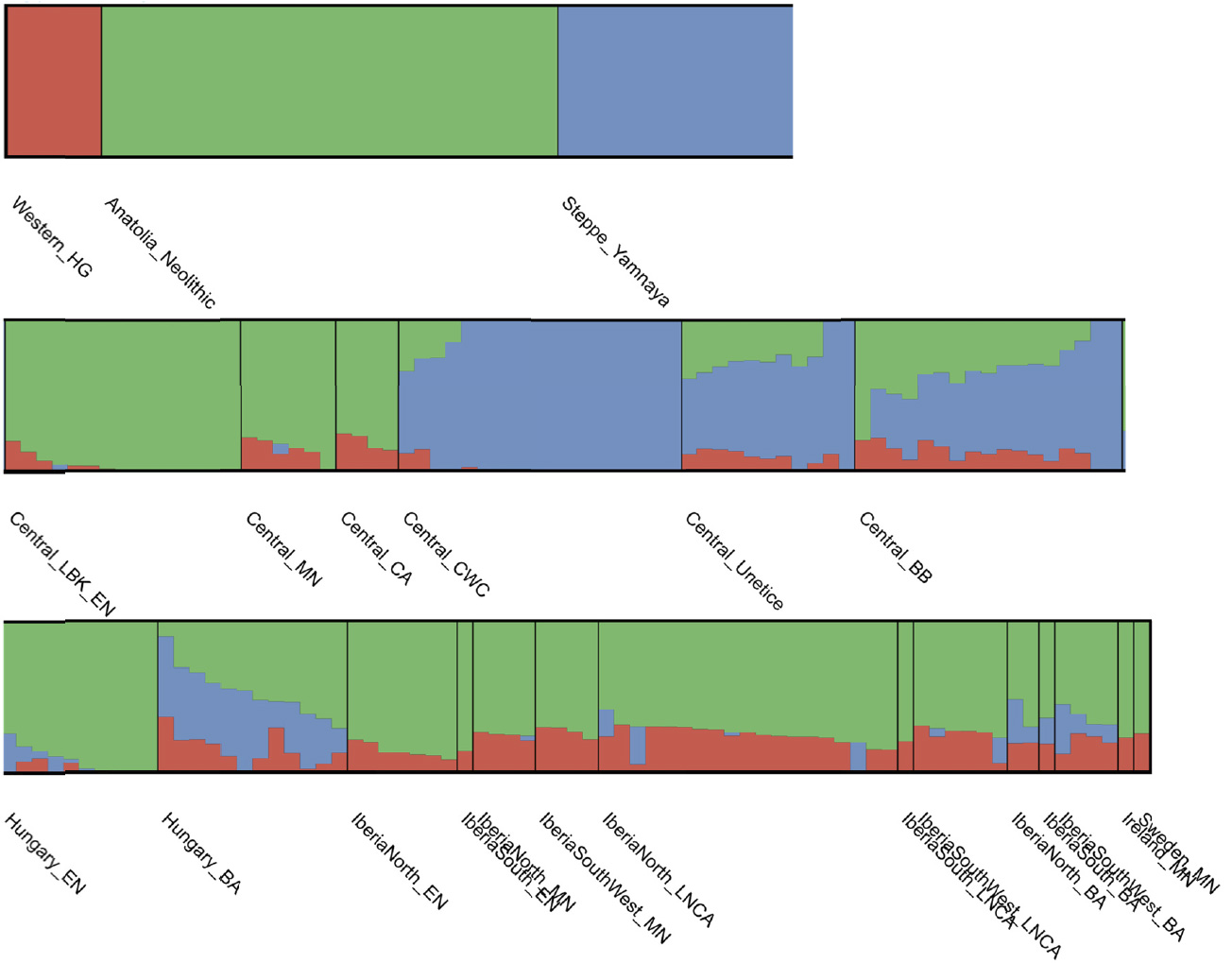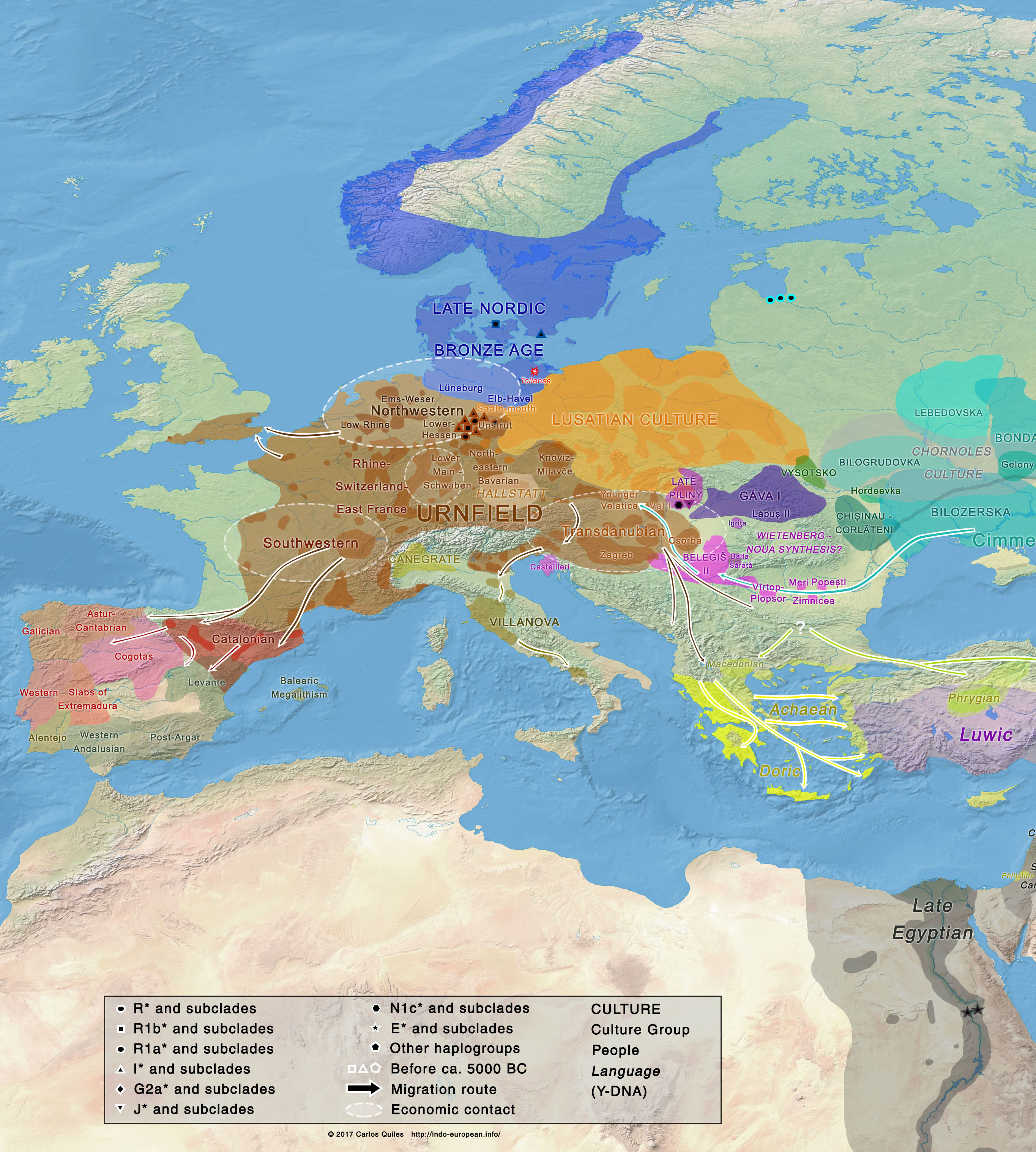I had some more time to read the paper by Valdiosera et al. (2018) and its supplementary material.
One of the main issues since the publication of Olalde et al. (2018) (and its hundreds of Bell Beaker samples) was the lack of a clear Y-DNA R1b-DF27 subclades among East Bell Beaker migrants, which left us wondering when the subclade entered the Iberian Peninsula, since it could have (theoretically) happened from the Chalcolithic to the Iron Age.
My prediction was that this lineage found today widespread among the Iberian population crossed the Pyrenees quite early, during the Chalcolithic, with migrating East Bell Beakers expanding North-West Indo-European dialects, and that it spread slowly afterwards.
The first ancient sample clearly identified as of R1b-DF27 subclade is found in this paper, at the Late Bronze Age site Cueva de los Lagos. Although it is unidentified and has no radiocarbon date, the site as a whole is associated with the Cogotas culture and its Bouquique ceramic decoration.

It was found in the northern part of the Cogotas culture territory (which lies mainly between Castille and Aragon, in North-Central Spain), shows evident steppe admixture, and it has become obvious with the latest papers (including this one) that R1b-M269 lineages intruded south of the Pyrenees associated with East Bell Beaker migrations.
The Proto-Cogotas culture is associated with a Bell Beaker substrate influenced by either El Argar or Atlantic Bronze, and the specific type of ceramics found at this Cogotas culture site are probably from the mid-2nd millennium, which is too early for the Celtic expansion.

Nevertheless, due to the quite likely late date of the sample (in the centuries around 1500 BC), there is still a possibility that incoming R1b-DF27 lineages were not among the early R1b-M269 lineages found in the Iberian Chalcolithic, and were associated with later migrations from Central Europe, potentially linked to the expansion of the Urnfield culture, and thus nearer to an Italo-Celtic community.

In any of these scenarios, a Pre-Celtic expansion of North-West Indo-European in Iberia (possibly associated with Lusitanian) is still the best explanation for the origin and expansion of (at least some) modern Iberian R1b-DF27 lineages, including those found among the Basque-speaking population.
This implies that the ‘indigenous’ Neolithic lineages of Iberia (like I2 and G2a2) were replaced with subsequent internal gene flows and founder effects, such as those that evidently happened (probably quite recently) among Basques, even though indigenous languages show an obvious continuity.
I would say this is the last nail in the coffin for autochthonous Y-DNA continuity theories for Spain and France (i.e. for the traditional Vasconic-Uralic hypothesis), but we know that data is never enough for any die hard continuist…so let’s just say another nail in the coffin for endless autochthonous continuity theories.
EDIT (18 & 26 MAR 2018): Genetiker has published Y-SNP calls for both R1b samples, showing this one is R1b1a1a2a1a2a-BY15964 (see modern members of this subclade in ytree), and that the other one is R1b1a1a2a~L23.
Related:
- Iberian prehistoric migrations in Genomics from Neolithic, Chalcolithic, and Bronze Age
- Patterns of genetic differentiation and the footprints of historical migrations in the Iberian Peninsula
- Population substructure in Iberia, highest in the north-west territory (to appear in Nature)
- Analysis of R1b-DF27 haplogroups in modern populations adds new information that contrasts with ‘steppe admixture’ results
- Migrations painted by Irish and Scottish genetic clusters, and their relationship with British and European ones
- Y-DNA relevant in the postgenomic era, mtDNA study of Iron Age Italic population, and reconstructing the genetic history of Italians
- The Tollense Valley battlefield: the North European ‘Trojan war’ that hints to western Balto-Slavic origins
- Olalde et al. and Mathieson et al. (Nature 2018): R1b-L23 dominates Bell Beaker and Yamna, R1a-M417 resurges in East-Central Europe during the Bronze Age